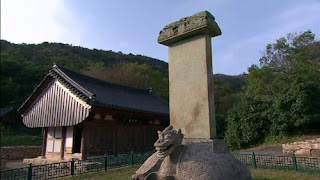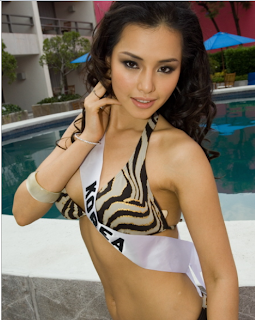Kungye is a mysterious person. There are not many records about him, and most of existing records describe him as a crazy tyrant who killed his wife, executed his sons, punished his officials, and drove the peasants into dire distress.
 |
| A "drama version" of Kungye |
A famous broadcasting program in Korea called "History Special" recently revived Kungye as a "Great King." According to an inscription ordered by Wang Kon, Kung Ye was in command of "Najoo Battle” and conquered "Jungwon" and Southwestern part of Korean peninsula, thus, was called a "Great King" in the early Koryo.
 |
| Inscription ordered by Wang Kon |
If the records are true, Wang Kon becomes the rebellion who raised a coup against the Great King Kung Ye. He could have tried to distort the image of Kung Ye and the achievement made by Kung Ye in order to justify his rebellion. What an interesting scenario! I don’t know how much the inscription is a reliable record in speaking history. But I think the scenario is not totally impossible as it is quite common that many old history books tend to be written in terms of the "winner" (in this case is Wang Kon). I think this is why any relevant existing historical records including texts, inscription, icon, etc., should be interpreted all together even to describe just one history event in order to minimize distortions in history.
Source:
http://news.hankooki.com/lpage/culture/201111/h2011112321513386330.htm
Textbook








